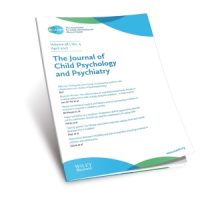Risk factors
-

Most Cited JCPP Articles #20 of 60
Most cited JCPP papers #20 of 60: When more is not better: the role of cumulative risk in child behavior outcomes
Read more -

Sleep problems in preschoolers predict depression and anxiety severity
The bidirectional links between sleep problems and psychopathology in children have been well-reviewed,1 but few investigations have been performed in young samples and those with early-onset psychopathology.
Read more -

Cortical hyperarousal in children may predict insomnia in adolescence
Read about the first developmental study to examine whether increased beta EEG activity in childhood precedes the onset of pathological insomnia symptoms in adolescence.
Read more -

Is childhood maltreatment a risk factor for increased symptoms of neurodevelopmental disorders?
Professor Helen Minnis and Lisa Dinkler discuss their paper “Maltreatment-associated neurodevelopmental disorders: a co-twin control analysis” published in the Journal of Child Psychology and Psychiatry.
Read more -

Early speech sound disorder alone confers a low risk on reading difficulties
Early speech sound disorder (SSD) combined with other risk factors, such as language impairment (LI) and dyslexia, can have negative consequences on literacy development, according to new research from Marianna Hayiou-Thomas and colleagues.
Read more -

Children with a language disorder are vulnerable to sexual abuse
Preliminary data suggest that children with language disorder may be at an increased risk of child sexual abuse (CSA),1,2 but few have studied the CSA experiences, disclosure patterns or reactions to disclosure in these children.
Read more -

JCPP Editorial: Volume 59, Issue 10, October 2018
“Troubled trajectories – new insights on risk pathways and developmental phenotypes of ADHD and externalizing problems” by S. Alexandra Burt, Jeffrey M. Halperin & Albertine J. Oldehinkel
Read more -

Moving towards prevention as the intervention of choice for depression in children and adolescents
Are there sub-groups of children characterized by similarities in the development of depressive symptoms? And, if there are, could this be a basis for early intervention and prevention of depressive disorder?
Read more -

The trajectories of depressive symptoms expressed in early childhood differ between boys and girls
A study by Diana Whalen and colleagues at Washington University has used latent class analysis (LCA) to identify and define the trajectories of latent classes of depressive symptoms in early childhood.
Read more -

Genetic factors influence the relationship between the home environment and onset of depressive symptom
Clinical depression is prevalent in adolescence, but how depression emerges and the nature of the early risk factors is unknown. Insight has now come from a study performed by researchers at King’s College London.
Read more